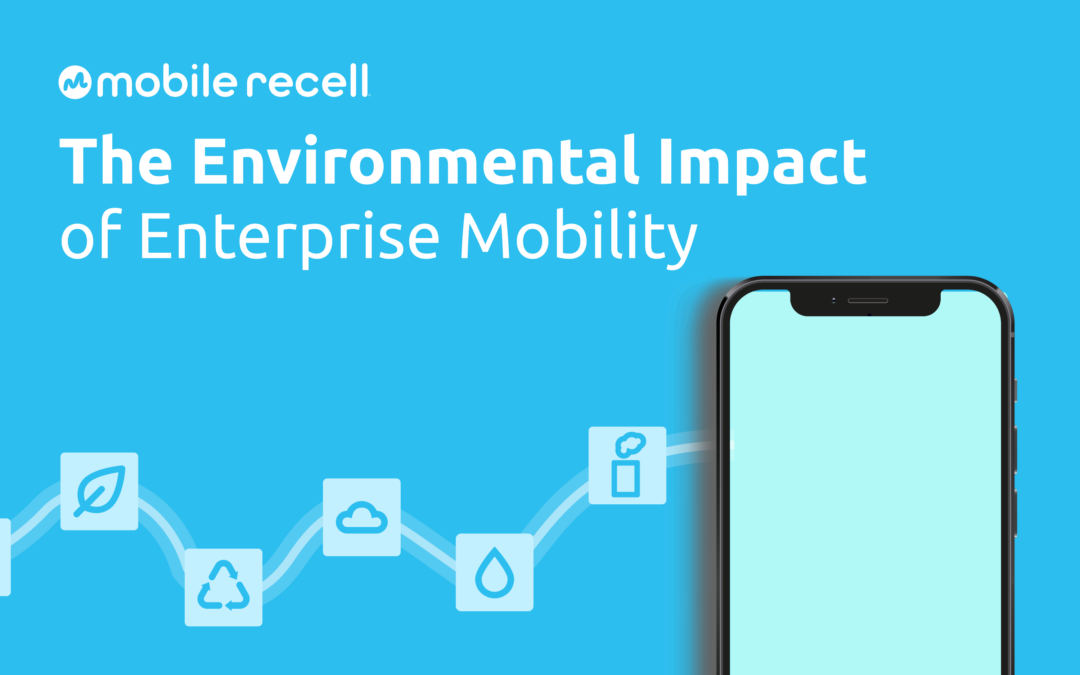“E-waste is a crisis that has already reached pandemic proportions and shows no sign of slowing.” – Greenpeace Guide to Greener Electronics
Living With the Repercussions of E-Waste
The e-waste crisis has been slowly becoming worse year after year.
Global e-waste volumes grew by 21% from 2014 to 2019, and are expected to increase by 39% by 2030.
The e-waste crisis is a critical situation for corporations. Most companies strive to be sustainable and environmentally conscious in all aspects of their business, and often revert to recycling to fulfill their promise.
Recycling is an important part of any IT asset recovery program, which allows companies to combat the e-waste crisis while keeping up with demands for new technology.
Future generations will have to live with the repercussions of e-waste discarded by today’s enterprises, which has already led to a steady decline in our current environmental climate.
Small changes can make a huge impact on the environment, and it starts with recovering retired IT assets, extending the lifecycle of devices, and responsibly recycling devices with no remaining life or residual value.
The Environmental Costs of Technology
“There is no such thing as ‘away.’ When we throw something away, it must go somewhere,” – Annie Leonard
In 2021, 63.3 million tons of e-waste were discarded. The unsafe disposal of electronic devices pollutes our environment and destroys our ecosystems.
Ecosystem degradation affects the health of 40% of the world’s population. E-waste damages our environment and contributes to climate change.
Part of the problem is devices are often considered useless after a relatively short time. Often, organizations will retire devices every three to four years, as they are replaced with the latest technology.
Many retiring assets still hold value and functionality and can be reused within an organization or another industry where they’re deemed useful, such as education, assisted living facilities, or under-resourced communities.
Corporations often supply employees with mobile devices—especially in hybrid and remote workforces—and often experience a company-wide device refresh, because continuing to use outdated technology can be a security risk. Device upgrades also enable remote employee productivity, increase remote employee efficiency, and allow employees to stay connected.
With an IT asset recovery program in place, enterprises can minimize the toxic e-waste attributed to their companies.
IT asset recovery focuses on recovering devices, allowing companies to reuse devices, which extends the asset lifecycle.
Every device Mobile reCell recovers undergoes rigorous NIST-compliant data erasure and receives a Certificate of Data Destruction to ensure valuable corporate data is securely removed before devices are redeployed and reused.
IT asset recovery allows companies to get the most value out of corporate-issued IT assets while minimizing the impact e-waste has on the environment.
The Effects of E-Waste on Human Health
Americans throw away an estimated $55 billion in e-waste materials annually.
If not properly disposed of, smartphones and other electronic devices can contaminate our air, soil, and water with harmful heavy metals—such as lead, mercury, and arsenic.
There are several health complications e-waste can cause for communities close to toxic dumpsites, such as:
- Cancer
- Damage to the liver or kidneys
- Damage to the central nervous system, which can affect the five senses—sight, hearing, taste, touch, and smell
- Damage to the peripheral nervous system, which can affect blood flow, heartbeat, breathing, and movement
How Mobile reCell Delivers a Sustainable Solution
Mobile devices play a large role in our lives. Enterprises must be strategic and do what they can to ensure a responsible end-of-lifecycle for IT assets.
If an IT asset has no remaining life or residual value, the environmentally friendly thing to do is recycle it. It’s essential to recycle retired devices with an R2 Certified organization, because if they aren’t recycled correctly, devices may not be broken down into base components, which can lead to toxic materials ending up in landfills.
If your company does not reclaim deployed IT assets and properly dispose of them, it is impossible to ensure your assets do not end up in landfills.
At Mobile reCell, every IT asset in your program’s inventory—both idle and deployed—is given a new life before proper disposition.
Additionally, we provide customized environmental impact reports to show how your IT asset lifecycle program is creating a sustainable solution—by reselling, reusing, and recycling assets—and saving e-waste materials from landfills.
E-waste is a complicated issue that requires a complex solution. Here are a few easy-to-implement initiatives enterprises can adopt to reduce their contribution to e-waste:
- Require all company-owned IT assets to be returned at the end of their lifecycle in your mobile device and IT equipment policies.
- Redeploy IT assets in departments that don’t require the latest technology to perform job duties.
- Recover retired IT assets and sell them to the secondary marketplace, which extends the device lifecycle and allows organizations to maximize residual value.
Chat with us to learn how your enterprise can maintain a sustainable business model with IT asset recovery through Mobile reCell.
Follow us on social media!
See Mobile reCell’s Recovery Platform in action.

